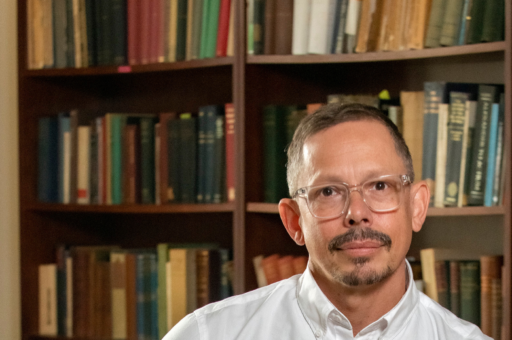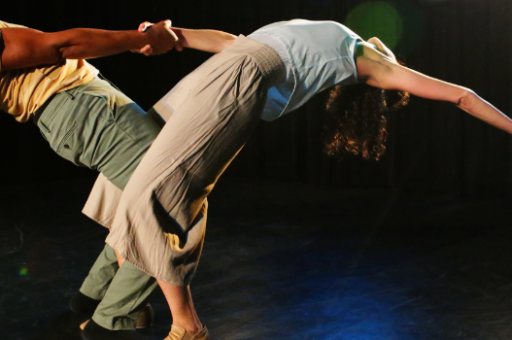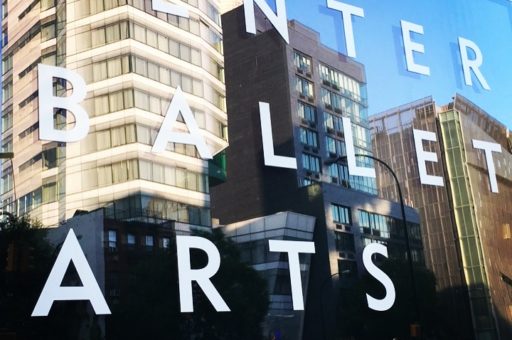Helen Simoneau (CBA ’17), a native of Rimouski, Québec, has been commissioned by The Juilliard School, Oregon Ballet Theatre, the American Dance Festival, UNC School of the Arts, The Yard, Springboard Danse Montréal, and the Swiss International Coaching Project (SiWiC) in Zurich. She was a resident artist at Baryshnikov Arts Center, Bates Dance Festival and has received fellowships from Bogliasco Foundation and twice from the North Carolina Arts Council. Her company Helen Simoneau Danse has been presented in Austria, Brazil, Canada, France, Greece, Italy, Spain, Switzerland, and has toured throughout Germany, Asia, and the United States. Notable venues that have presented her work include The Guggenheim Museum (NYC), Dance Place (DC), Joyce SoHo (NYC), Tangente (Montréal), The Aoyama Round Theatre (Tokyo), the L.I.G. Art Hall Busan (South Korea), Jacob’s Pillow Inside/Out (MA), PACT-Zollverein in Essen (Germany), and Athens International Dance Festival (Greece). Her work was also presented at the 13th Internationales Solo-Tanz-Theatre Festival in Stuttgart, Germany, where she was awarded 1st place for Choreography.
For more about Simoneau’s CBA Fellowship, visit her fellow page.
What were you working on before your fellowship? What brought you to CBA?
Mainly I have been working as a freelance choreographer either creating new works with dancers I hire or for different dance companies both contemporary dance and ballet. I often guest teach as well.
Please briefly describe your CBA Fellowship project. What were the key elements or focus areas of your project?
My interests for this project were in ballet partnering and finding ways for all dancers to be equally participating in pushing forward the kinetic narrative. Often, I see partnering, especially on pointe, where one dancer is only leading and one is only following. I am bored with that and am seeking to see how else can we dance together.

Your piece was set to an original score by Nathalie Joachim. How did this collaboration come about? How does working with an original score influence the artistic process?
Nathalie and I had worked together before so had a solid foundation to our collaboration. I began working without music, sent her footage, and she began to compose. Then, the reverse, she would send me something that I could try out in the studio. We gave each other regular feedback which resulted in a score that supports the dance in an open way, setting an environment while leaving room, and in other instances with a clear tempo and beat to propel the dancers forward.
During your seminar, you mentioned that you benefited from having extended time to create. What was the biggest advantage of this extra time? How did it influence your artistic process?
Having time allowed me to explore rather than having to focus on creating a product. Usually in a commission, there is little time to establish a rapport with the dancers or to play with the music and movement material, so I end up relying on what I do best. This can result in a great product, but it doesn’t allow me to be innovative and develop more ways for me to create. The fellowship allowed me to try different ideas even if they didn’t work well at first, or try material on different dancers to see how different pairings would feel. There wasn’t the rush to make decisions and that yielded stronger work in the end.

What challenges or questions do you still face in regard to this work?
The biggest challenge ended up being the dancers’ schedules.
Which comments during and/or after your seminar were most helpful to you?
Jennifer Homans spoke about the different planes in pointework which had me thinking a lot about risk and how much further I could go. This is something I want to explore. Another person spoke about movement scale, which I want to examine as well.

Did you make any surprising discoveries during your CBA Fellowship? If so, how did they inform your work?
Yes, I discovered that I am interested in drama. I’ve always thought of myself as a choreographer who does not play with drama, however I realized that I am actually quite fascinated with the drama of execution, seeing how dancers embody a difficult steps and negotiate partnering. Traditional narratives are not where my passion lies, but that doesn’t mean there isn’t drama within an abstract work.
How do you see your project evolving after the fellowship concludes?
My goal is to find a company or presenter to commission the completion of this piece. The fellowship presentation gave me a lot of useful feedback that has helped me decide how the work will continue to develop. I can see it growing from 6 dancers to at least 12 and perhaps expanding from its 20mins to 30mins. I would like to insert some more thematic material in the form of ensemble unison throughout the work to anchor the piece in a more specific aesthetic or signature.





